Towards an Understanding of Crystallization by Attachment
Abstract
1. Introduction
2. Materials and Methods
2.1. Preparation and Characterization of Calcite
2.2. AFM Force Measurement
2.3. Molecular Dynamics Simulations
3. Results and Discussion
3.1. Retardant Effects of Hydration Layers on Attachment
3.1.1. Mineral Hydration Layers
3.1.2. Dehydration during Particle Attachment
3.2. Promotion Effect of Ionic Bridge on Attachment under Supersaturated Condition
3.2.1. Formation of Ionic Bridges during Attachment
3.2.2. Mechanism of Ionic Bridge Formation
3.2.3. Capillary Bridges Promoted CPA Process
4. Conclusions
Author Contributions
Funding
Acknowledgments
Conflicts of Interest
References
- Burton, W.K.; Frank, F.C.; Cabrera, N. The growth of crystals and the equilibrium structure of their surfaces. Philos. Trans. R. Soc. Lond. Ser. A 1951, 243, 299–358. [Google Scholar] [CrossRef]
- Hwang, N.-M. Non-classical Crystallization. Ellipsom. Funct. Org. Surf. Film. 2016, 60, 1–20. [Google Scholar]
- De Yoreo, J.J.; Gilbert, P.U.P.A.; Sommerdijk, N.A.J.M.; Penn, R.L.; Whitelam, S.; Joester, D.; Zhang, H.; Rimer, J.D.; Navrotsky, A.; Banfield, J.F.; et al. Crystallization by particle attachment in synthetic, biogenic, and geologic environments. Science 2015, 349, aaa6760. [Google Scholar] [CrossRef] [PubMed]
- DeYoreo, J.J.; Vekilov, P.G. Principles of Crystal Nucleation and Growth. Rev. Mineral. Geochemistry 2003, 54, 57–93. [Google Scholar] [CrossRef]
- Politi, Y.; Metzler, R.A.; Abrecht, M.; Gilbert, B.; Wilt, F.H.; Sagi, I.; Addadi, L.; Weiner, S.; Gilbert, P.U.P.A. Transformation mechanism of amorphous calcium carbonate into calcite in the sea urchin larval spicule. Proc. Natl. Acad. Sci. USA 2008, 105, 17362–17366. [Google Scholar] [CrossRef] [PubMed]
- Liu, Z.; Shao, C.; Jin, B.; Zhang, Z.; Zhao, Y.; Xu, X.; Tang, R. Crosslinking ionic oligomers as conformable precursors to calcium carbonate. Nature 2019, 574, 394–398. [Google Scholar] [CrossRef]
- Shao, C.; Jin, B.; Mu, Z.; Lu, H.; Zhao, Y.; Wu, Z.; Yan, L.; Zhang, Z.; Zhou, Y.; Pan, H.; et al. Repair of tooth enamel by a biomimetic mineralization frontier ensuring epitaxial growth. Sci. Adv. 2019, 5, eaaw9569. [Google Scholar] [CrossRef]
- Yu, Y.; Mu, Z.; Jin, B.; Liu, Z.; Tang, R. Organic–Inorganic Copolymerization for a Homogenous Composite without an Interphase Boundary. Angew. Chem. Int. Ed. 2020, 59, 2071–2075. [Google Scholar] [CrossRef]
- Gower, L.B. Biomimetic Model Systems for Investigating the Amorphous Precursor Pathway and Its Role in Biomineralization. Chem. Rev. 2008, 108, 4551–4627. [Google Scholar] [CrossRef]
- Cheng, X.; Varona, P.L.; Olszta, M.J.; Gower, L.B. Biomimetic synthesis of calcite films by a polymer-induced liquid-precursor (PILP) process. J. Cryst. Growth 2007, 307, 395–404. [Google Scholar] [CrossRef]
- Cho, K.R.; Kim, Y.-Y.; Yang, P.; Cai, W.; Pan, H.; Kulak, A.N.; Lau, J.L.; Kulshreshtha, P.; Armes, S.P.; Meldrum, F.C.; et al. Direct observation of mineral-organic composite formation reveals occlusion mechanism. Nat. Commun. 2016, 7, 10187. [Google Scholar] [CrossRef]
- Kim, Y.-Y.; Ganesan, K.; Yang, P.; Kulak, A.N.; Borukhin, S.; Pechook, S.; Ribeiro, L.; Kröger, R.; Eichhorn, S.J.; Armes, S.P.; et al. An artificial biomineral formed by incorporation of copolymer micelles in calcite crystals. Nat. Mater. 2011, 10, 890–896. [Google Scholar] [CrossRef] [PubMed]
- Mao, L.-B.; Gao, H.-L.; Yao, H.-B.; Liu, L.; Cölfen, H.; Liu, G.; Chen, S.-M.; Li, S.-K.; Yan, Y.-X.; Liu, Y.; et al. Synthetic nacre by predesigned matrix-directed mineralization. Science 2016, 354, 107–110. [Google Scholar] [CrossRef] [PubMed]
- Cölfen, H.; Antonietti, M. Mesocrystals and Nonclassical Crystallization; John Wiley & Sons, Ltd.: Hoboken, NJ, USA, 2008; ISBN 9780470994603. [Google Scholar]
- Derjaguin, B.; Landau, L. Theory of stability of highly charged liophobic sols and adhesion of highly charged particles in solutions of electrolytes. Zhurnal Ekspe. I Teor. Fiz. 1945, 15, 663–682. [Google Scholar]
- Verwey, E.J.W.; Overbeek, J.T.G.; van Nes, K. Theory of the Stability of Lyophobic Colloids: The Interaction of Sol Particles Having an Electric Double Layer; Elsevier: Amsterdam, The Netherlands, 1948. [Google Scholar]
- Fenter, P.; Lee, S.S. Hydration layer structure at solid–water interfaces. MRS Bull. 2014, 39, 1056–1061. [Google Scholar] [CrossRef]
- Putnis, C.V.; Ruiz-Agudo, E. The Mineral-Water Interface: Where Minerals React with the Environment. Elements 2013, 9, 177–182. [Google Scholar] [CrossRef]
- Striolo, A. From Interfacial Water to Macroscopic Observables: A Review. Adsorpt. Sci. Technol. 2011, 29, 211–258. [Google Scholar] [CrossRef]
- Wang, J.; Kalinichev, A.G.; Kirkpatrick, R.J. Effects of substrate structure and composition on the structure, dynamics, and energetics of water at mineral surfaces: A molecular dynamics modeling study. Geochim. Cosmochim. Acta 2006, 70, 562–582. [Google Scholar] [CrossRef]
- Skinner, H.C.W. Biominerals. Min. Mag. 2005, 69, 621–641. [Google Scholar] [CrossRef]
- Gustafsson, J.P. Visual MINTEQ, Stockholm. Available online: https://vminteq.lwr.kth.se/ (accessed on 20 September 2019).
- Abraham, M.J.; van der Spoel, D.; Lindahl, E.; Hess, B. The GROMACS Development Team, GROMACS User Manual Version 2016.4. Available online: www.gromacs.org (accessed on 5 March 2019).
- Graf, D.L. Crystallographic tables for the rhombohedral carbonates. Am. Mineral. 1961, 46, 1283–1316. [Google Scholar]
- Perry, T.D.; Cygan, R.T.; Mitchell, R. Molecular models of a hydrated calcite mineral surface. Geochim. Cosmochim. Acta 2007, 71, 5876–5887. [Google Scholar] [CrossRef]
- Darden, T.; York, D.; Pedersen, L. Particle mesh Ewald: AnN log (N) method for Ewald sums in large systems. J. Chem. Phys. 1993, 98, 10089–10092. [Google Scholar] [CrossRef]
- Berendsen, H.J.C.; Postma, J.P.M.; DiNola, A.; Haak, J.R.; Van Gunsteren, W.F. Molecular dynamics with coupling to an external bath. J. Chem. Phys. 1984, 81, 3684. [Google Scholar] [CrossRef]
- Bussi, G.; Donadio, D.; Parrinello, M. Canonical sampling through velocity rescaling. J. Chem. Phys. 2007, 126, 14101. [Google Scholar] [CrossRef] [PubMed]
- Humphrey, W.; Dalke, A.; Schulten, K. VMD: Visual molecular dynamics. J. Mol. Graph. 1996, 14, 33–38. [Google Scholar] [CrossRef]
- Kästner, J.; Thiel, W. Bridging the gap between thermodynamic integration and umbrella sampling provides a novel analysis method: “Umbrella integration”. J. Chem. Phys. 2005, 123, 144104. [Google Scholar] [CrossRef]
- Murata, K.; Sugita, Y.; Okamoto, Y. Free energy calculations for DNA base stacking by replica-exchange umbrella sampling. Chem. Phys. Lett. 2004, 385, 1–7. [Google Scholar] [CrossRef]
- Kästner, J.; Thiel, W. Analysis of the statistical error in umbrella sampling simulations by umbrella integration. J. Chem. Phys. 2006, 124, 234106. [Google Scholar] [CrossRef]
- Kumar, S.; Rosenberg, J.M.; Bouzida, D.; Swendsen, R.H.; Kollman, P.A. THE weighted histogram analysis method for free-energy calculations on biomolecules. I. The method. J. Comput. Chem. 1992, 13, 1011–1021. [Google Scholar] [CrossRef]
- Hub, J.S.; De Groot, B.L.; Van Der Spoel, D. g_wham—A Free Weighted Histogram Analysis Implementation Including Robust Error and Autocorrelation Estimates. J. Chem. Theory Comput. 2010, 6, 3713–3720. [Google Scholar] [CrossRef]
- Stipp, S.; Eggleston, C.; Nielsen, B. Calcite surface structure observed at microtopographic and molecular scales with atomic force microscopy (AFM). Geochim. Cosmochim. Acta 1994, 58, 3023–3033. [Google Scholar] [CrossRef]
- Stipp, S. Toward a conceptual model of the calcite surface: Hydration, hydrolysis, and surface potential. Geochim. Cosmochim. Acta 1999, 63, 3121–3131. [Google Scholar] [CrossRef]
- Park, C.; Fenter, P.; Zhang, Z.; Cheng, L.; Sturchio, N.C. Structure of the fluorapatite (100)-water interface by high-resolution X-ray reflectivity. Am. Min. 2004, 89, 1647–1654. [Google Scholar] [CrossRef]
- Heberling, F.; Trainor, T.P.; Lützenkirchen, J.; Eng, P.; Denecke, M.; Bosbach, D. Structure and reactivity of the calcite–water interface. J. Colloid Interface Sci. 2011, 354, 843–857. [Google Scholar] [CrossRef]
- Pareek, A.; Torrelles, X.; Angermund, K.; Rius, J.; Magdans, U.; Gies, H. Structure of Interfacial Water on Fluorapatite (100) Surface. Langmuir 2008, 24, 2459–2464. [Google Scholar] [CrossRef] [PubMed]
- E Wilson, E.; Awonusi, A.; Morris, M.D.; Kohn, D.H.; Tecklenburg, M.M.; Beck, L.W. Highly Ordered Interstitial Water Observed in Bone by Nuclear Magnetic Resonance. J. Bone Min. Res. 2004, 20, 625–634. [Google Scholar] [CrossRef] [PubMed]
- Imada, H.; Kimura, K.; Onishi, H. Water and 2-Propanol Structured on Calcite (104) Probed by Frequency-Modulation Atomic Force Microscopy. Langmuir 2013, 29, 10744–10751. [Google Scholar] [CrossRef]
- Rode, S.; Oyabu, N.; Kobayashi, K.; Yamada, H.; Kühnle, A. True Atomic-Resolution Imaging of (1014) Calcite in Aqueous Solution by Frequency Modulation Atomic Force Microscopy. Langmuir 2009, 25, 2850–2853. [Google Scholar] [CrossRef]
- Marutschke, C.; Walters, D.; Cleveland, J.; Hermes, I.; Bechstein, R.; Kuhnle, A. Three-dimensional hydration layer mapping on the (10.4) surface of calcite using amplitude modulation atomic force microscopy. Nanotechnology 2014, 25, 335703. [Google Scholar] [CrossRef]
- Dorvee, J.R.; Veis, A. Water in the Formation of Biogenic Minerals: Peeling Away the Hydration Layers. J. Struct. Boil. 2013, 183, 278–303. [Google Scholar] [CrossRef]
- Fenter, P.; Kerisit, S.; Raiteri, P.; Gale, J.D. Is the Calcite–Water Interface Understood? Direct Comparisons of Molecular Dynamics Simulations with Specular X-ray Reflectivity Data. J. Phys. Chem. C 2013, 117, 5028–5042. [Google Scholar] [CrossRef]
- Zhu, B.; Xu, X.; Tang, R. Hydration layer structures on calcite facets and their roles in selective adsorptions of biomolecules: A molecular dynamics study. J. Chem. Phys. 2013, 139, 234705. [Google Scholar] [CrossRef] [PubMed]
- Pan, H.; Tao, J.; Wu, T.; Tang, R. Molecular simulation of water behaviors on crystal faces of hydroxyapatite. Front. Chem. China 2007, 2, 156–163. [Google Scholar] [CrossRef]
- Garcia, N.; Raiteri, P.; Vlieg, E.; Gale, J.D. Water Structure, Dynamics and Ion Adsorption at the Aqueous {010} Brushite Surface. Minerals 2018, 8, 334. [Google Scholar] [CrossRef]
- Perdikouri, C.; Putnis, C.V.; Kasioptas, A.; Putnis, A. An Atomic Force Microscopy Study of the Growth of a Calcite Surface as a Function of Calcium/Total Carbonate Concentration Ratio in Solution at Constant Supersaturation. Cryst. Growth Des. 2009, 9, 4344–4350. [Google Scholar] [CrossRef]
- Stack, A.G.; Grantham, M.C. Growth Rate of Calcite Steps As a Function of Aqueous Calcium-to-Carbonate Ratio: Independent Attachment and Detachment of Calcium and Carbonate Ions. Cryst. Growth Des. 2010, 10, 1409–1413. [Google Scholar] [CrossRef]
- Sand, K.K.; Tobler, D.J.; Dobberschütz, S.; Larsen, K.; Makovicky, E.; Andersson, M.P.; Wolthers, M.; Stipp, S. Calcite Growth Kinetics: Dependence on Saturation Index, Ca2+:CO32–Activity Ratio, and Surface Atomic Structure. Cryst. Growth Des. 2016, 16, 3602–3612. [Google Scholar] [CrossRef]
- Ruiz-Agudo, E.; Putnis, C.V.; Wang, L.; Putnis, A. Specific effects of background electrolytes on the kinetics of step propagation during calcite growth. Geochim. Cosmochim. Acta 2011, 75, 3803–3814. [Google Scholar] [CrossRef]
- Ricci, M.; Spijker, P.; Stellacci, F.; Molinari, J.-F.; Voïtchovsky, K. Direct Visualization of Single Ions in the Stern Layer of Calcite. Langmuir 2013, 29, 2207–2216. [Google Scholar] [CrossRef]
- Chernov, A.A.; Parvov, V.F.; Eskin, S.M.; Sipyagin, V.V. Fluctuations and Anomalous Temperature Dependence in the Growth Rates of KA1 (SO4)2• 12H2O and KNO3. In Рoст Кристаллoь/Rost Kristallov/Growth of Crystals; Springer: Berlin/Heidelberg, Germany, 1984; pp. 103–107. [Google Scholar]
- Bocharov, S.N.; Glikin, A.É. Kinetic anomalies of crystal growth: Development of methodical approaches and interpretations. Cryst. Rep. 2008, 53, 147–153. [Google Scholar] [CrossRef]
- Martin-Jimenez, D.; Chacón, E.; Tarazona, P.; Garcia, R. Atomically resolved three-dimensional structures of electrolyte aqueous solutions near a solid surface. Nat. Commun. 2016, 7, 12164. [Google Scholar] [CrossRef] [PubMed]
- Labuda, A.; Kobayashi, K.; Suzuki, K.; Yamada, H.; Grütter, P. Monotonic Damping in Nanoscopic Hydration Experiments. Phys. Rev. Lett. 2013, 110, 066102. [Google Scholar] [CrossRef] [PubMed]
- Israelachvili, J.N.; Pashley, R.M. Molecular layering of water at surfaces and origin of repulsive hydration forces. Nature 1983, 306, 249–250. [Google Scholar] [CrossRef]
- Røyne, A.; Dalby, K.; Hassenkam, T. Repulsive hydration forces between calcite surfaces and their effect on the brittle strength of calcite-bearing rocks. Geophys. Res. Lett. 2015, 42, 4786–4794. [Google Scholar] [CrossRef]
- Israelachvili, J.N. Intermolecular & Surface Forces; Academic Press: Cambridge, MA, USA, 1992. [Google Scholar]
- Smeets, P.J.M.; Finney, A.R.; Habraken, W.J.E.M.; Nudelman, F.; Friedrich, H.; Laven, J.; De Yoreo, J.J.; Rodger, P.M.; Sommerdijk, N.A.J.M. A classical view on nonclassical nucleation. Proc. Natl. Acad. Sci. USA 2017, 114, E7882–E7890. [Google Scholar] [CrossRef]
- Gebauer, D.; Kellermeier, M.; Gale, J.D.; Bergström, L.; Cölfen, H. Pre-nucleation clusters as solute precursors in crystallisation. Chem. Soc. Rev. 2014, 43, 2348–2371. [Google Scholar] [CrossRef]
- Budi, A.; Stipp, S.; Andersson, M.P. Calculation of Entropy of Adsorption for Small Molecules on Mineral Surfaces. J. Phys. Chem. C 2018, 122, 8236–8243. [Google Scholar] [CrossRef]
- Liu, X.Y. Heterogeneous nucleation or homogeneous nucleation? J. Chem. Phys. 2000, 112, 9949–9955. [Google Scholar] [CrossRef]
- Christenson, H.K. Two-step crystal nucleation via capillary condensation. CrystEngComm 2013, 15, 2030. [Google Scholar] [CrossRef]
- Hamm, L.M.; Giuffre, A.J.; Han, N.; Tao, J.; Wang, D.; De Yoreo, J.J.; Dove, P.M. Reconciling disparate views of template-directed nucleation through measurement of calcite nucleation kinetics and binding energies. Proc. Natl. Acad. Sci. USA 2014, 111, 1304–1309. [Google Scholar] [CrossRef]
- Jin, B.; Sushko, M.L.; Liu, Z.; Jin, C.; Tang, R. In Situ Liquid Cell TEM Reveals Bridge-Induced Contact and Fusion of Au Nanocrystals in Aqueous Solution. Nano Lett. 2018, 18, 6551–6556. [Google Scholar] [CrossRef] [PubMed]
- Gehrke, N.; Cölfen, H.; Pinna, N.; Antonietti, M.; Nassif, N. Superstructures of Calcium Carbonate Crystals by Oriented Attachment. Cryst. Growth Des. 2005, 5, 1317–1319. [Google Scholar] [CrossRef]
- Liu, Z.; Pan, H.; Zhu, G.; Li, Y.; Tao, J.; Jin, B.; Tang, R. Realignment of Nanocrystal Aggregates into Single Crystals as a Result of Inherent Surface Stress. Angew. Chem. Int. Ed. 2016, 55, 12836–12840. [Google Scholar] [CrossRef] [PubMed]
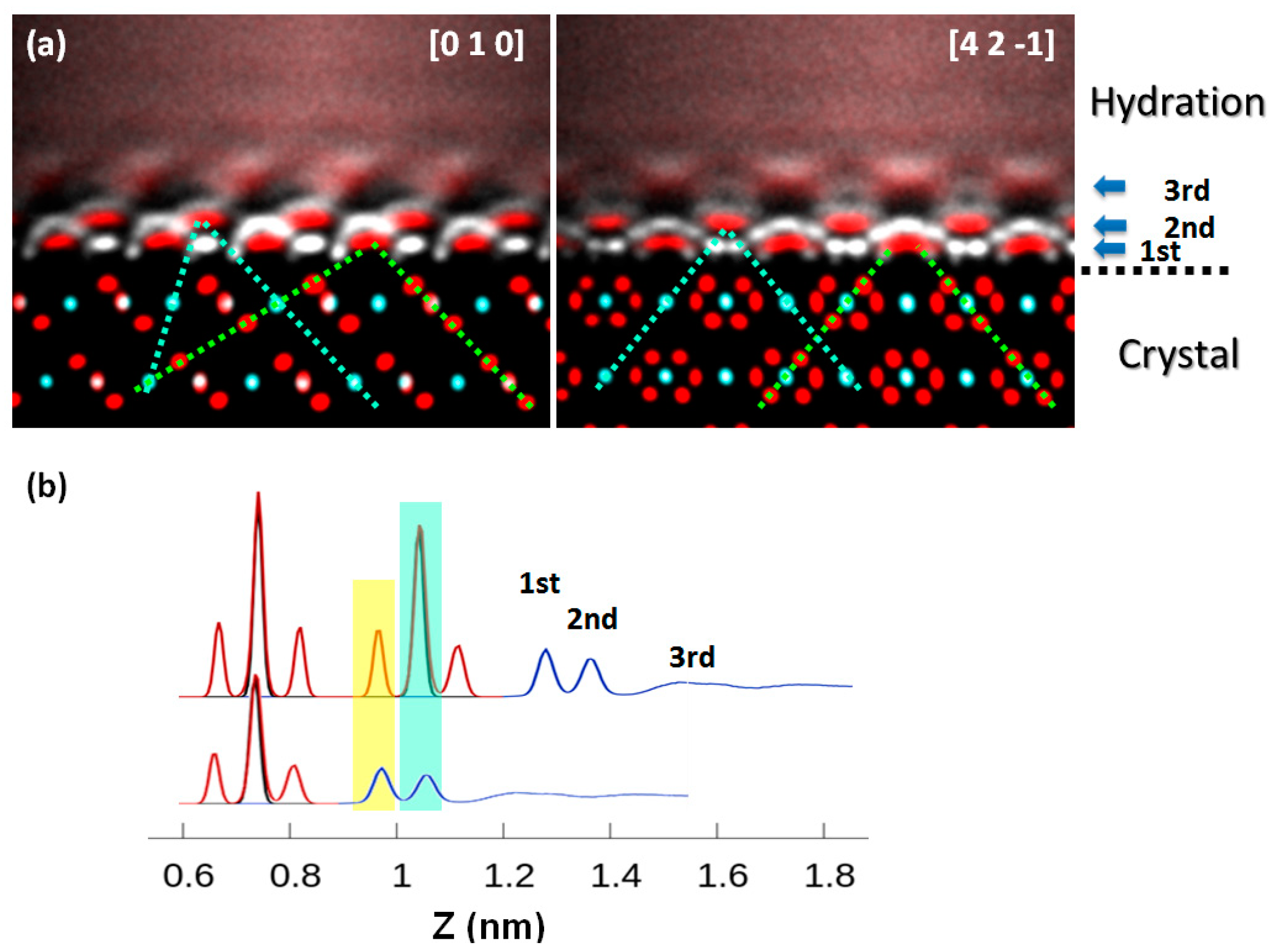
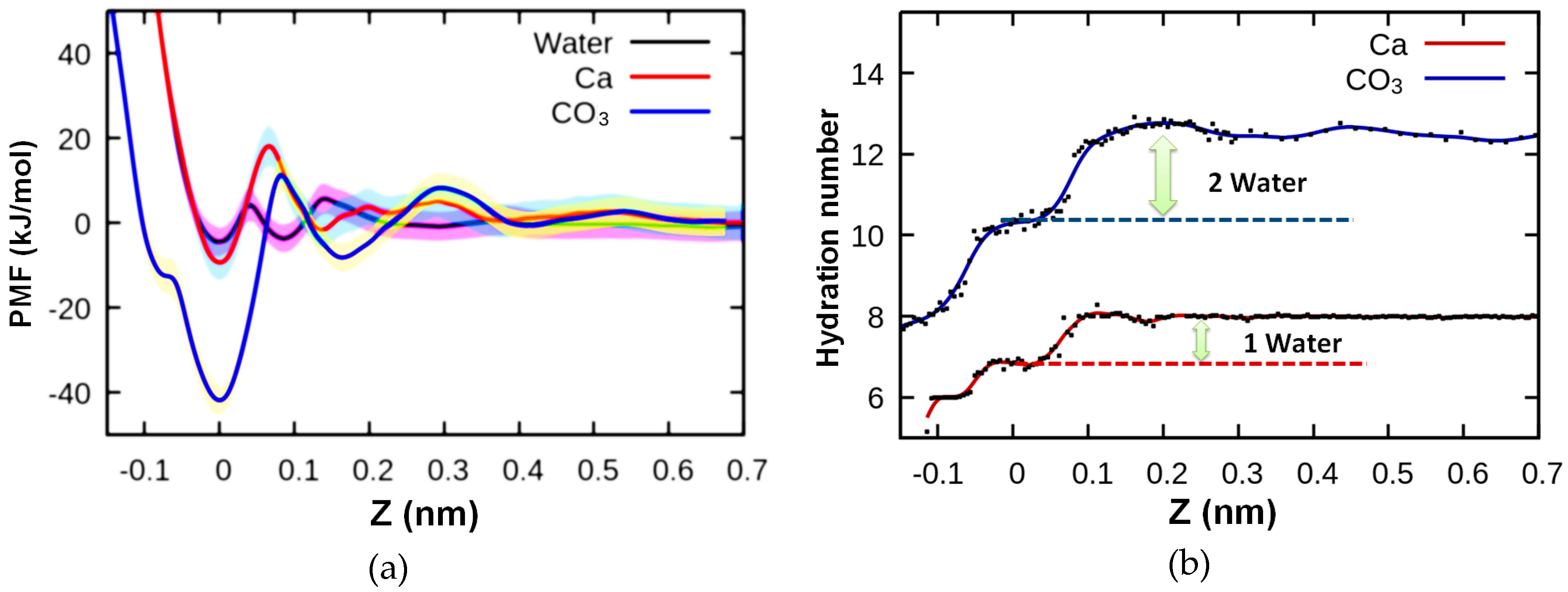
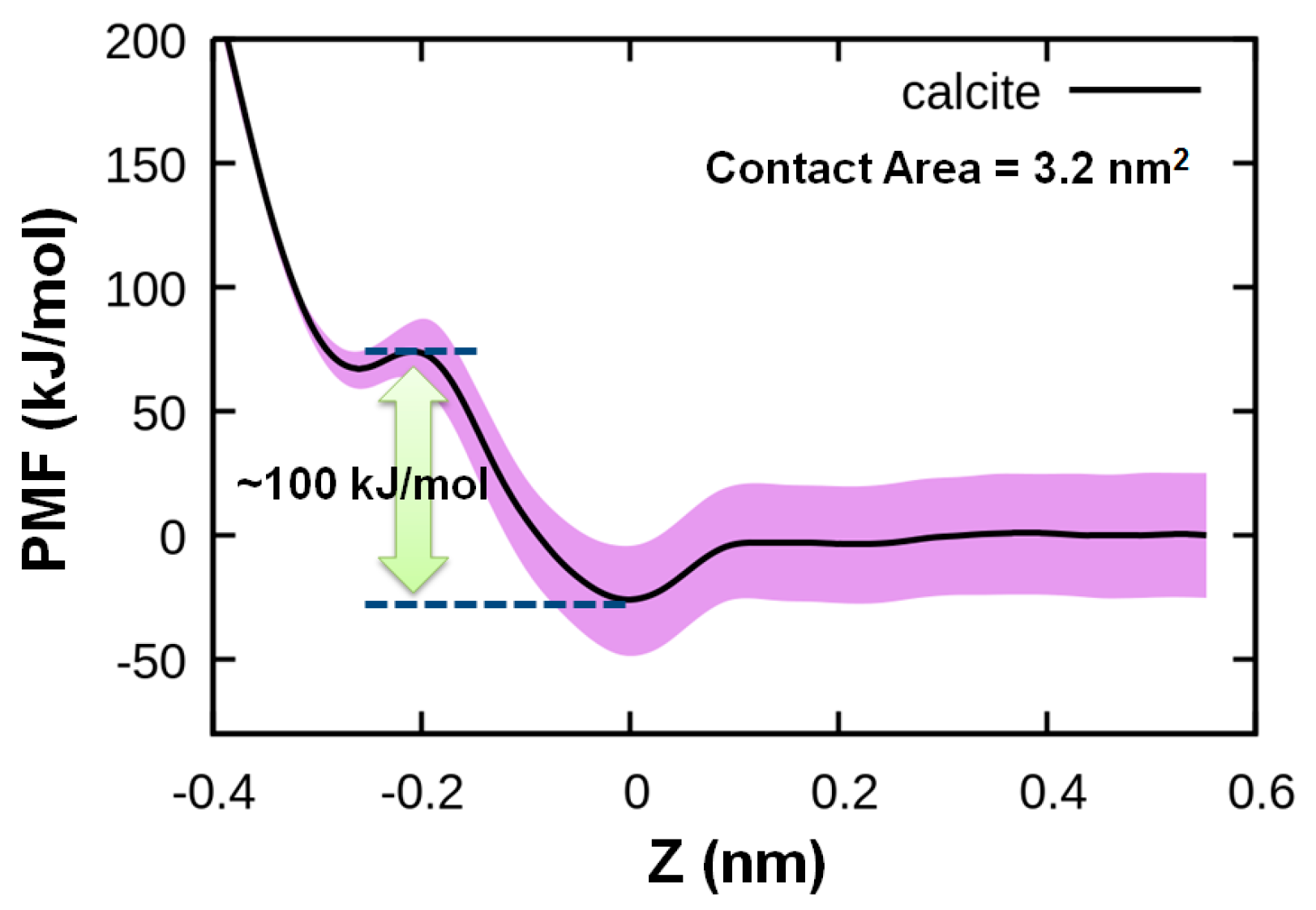
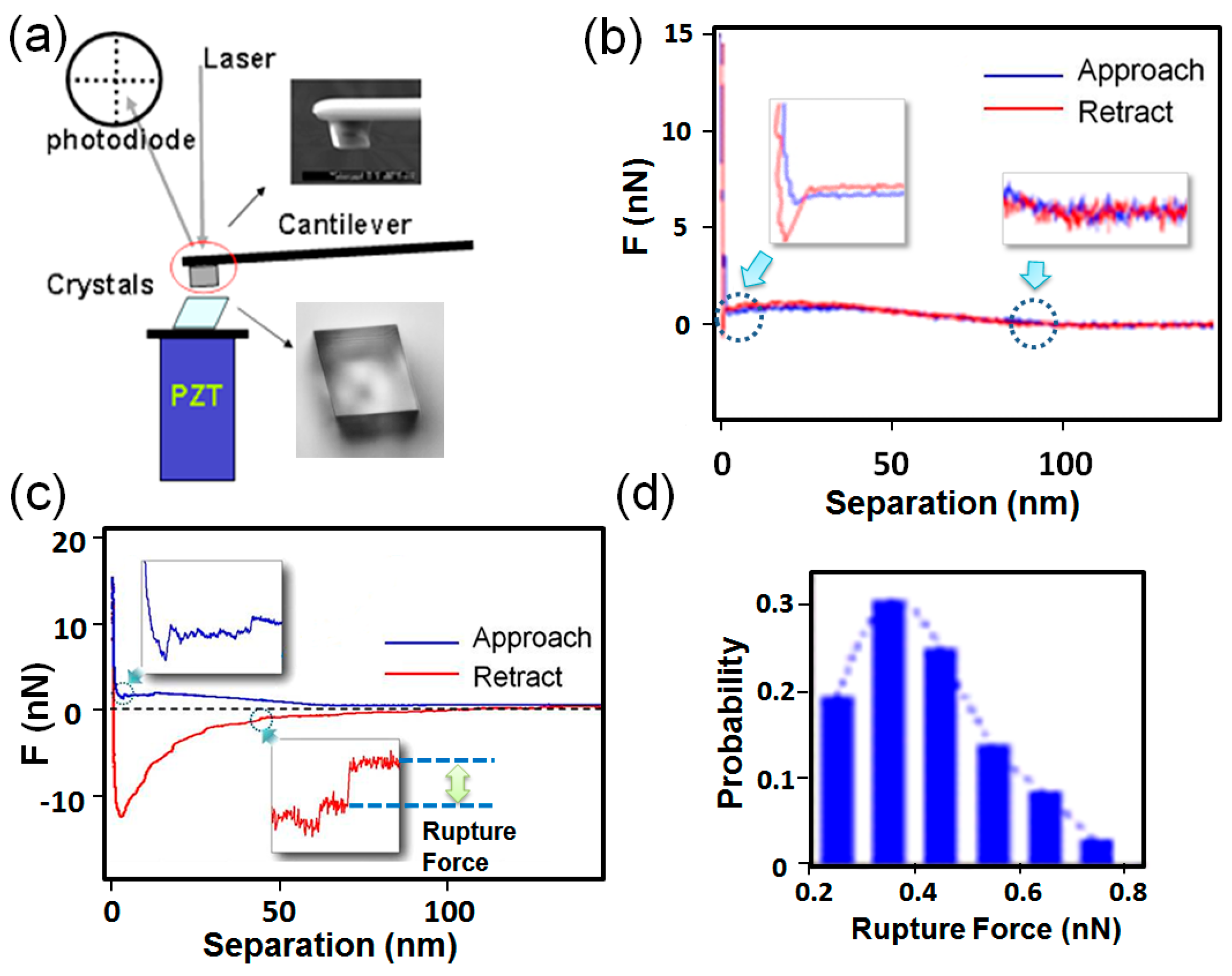

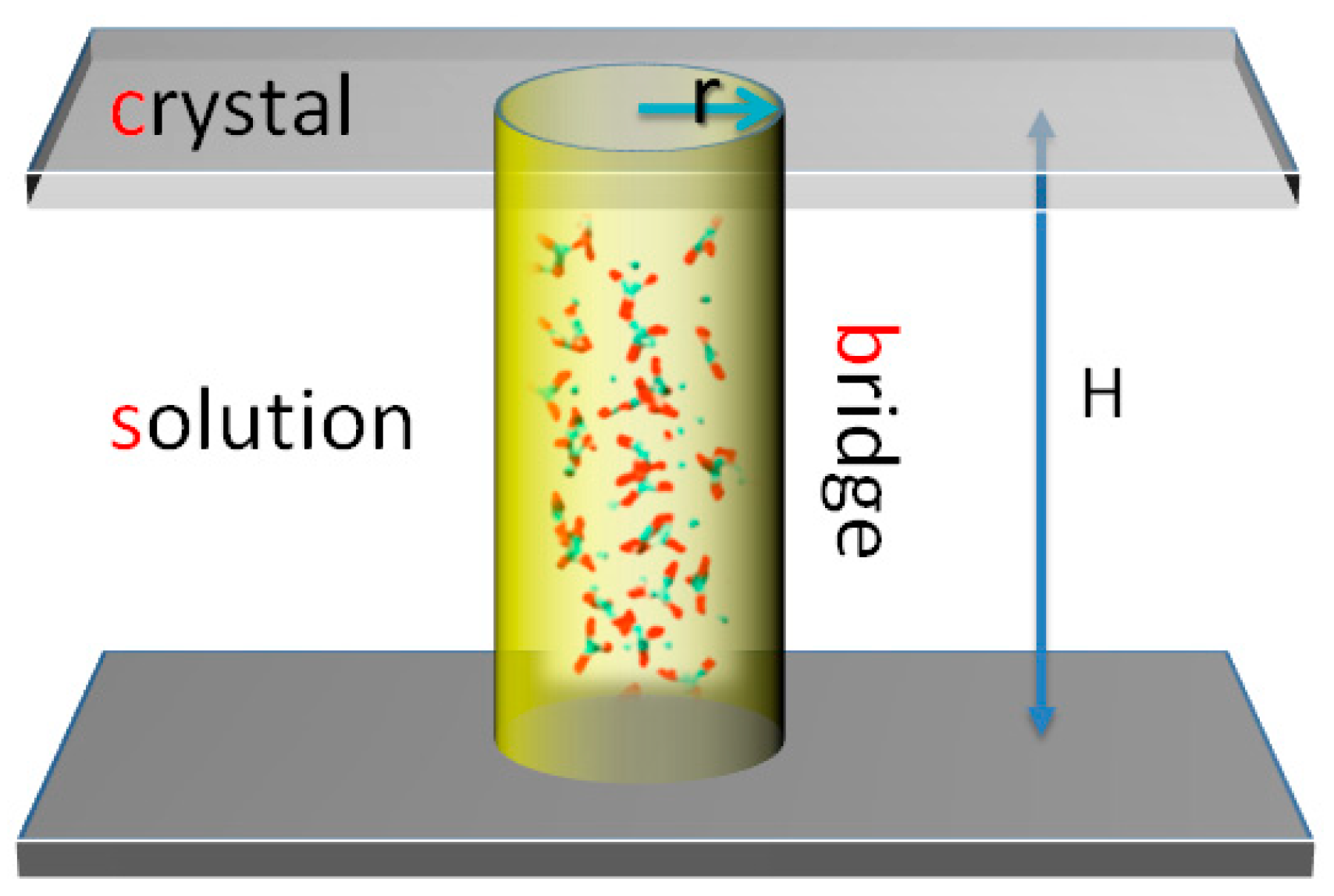
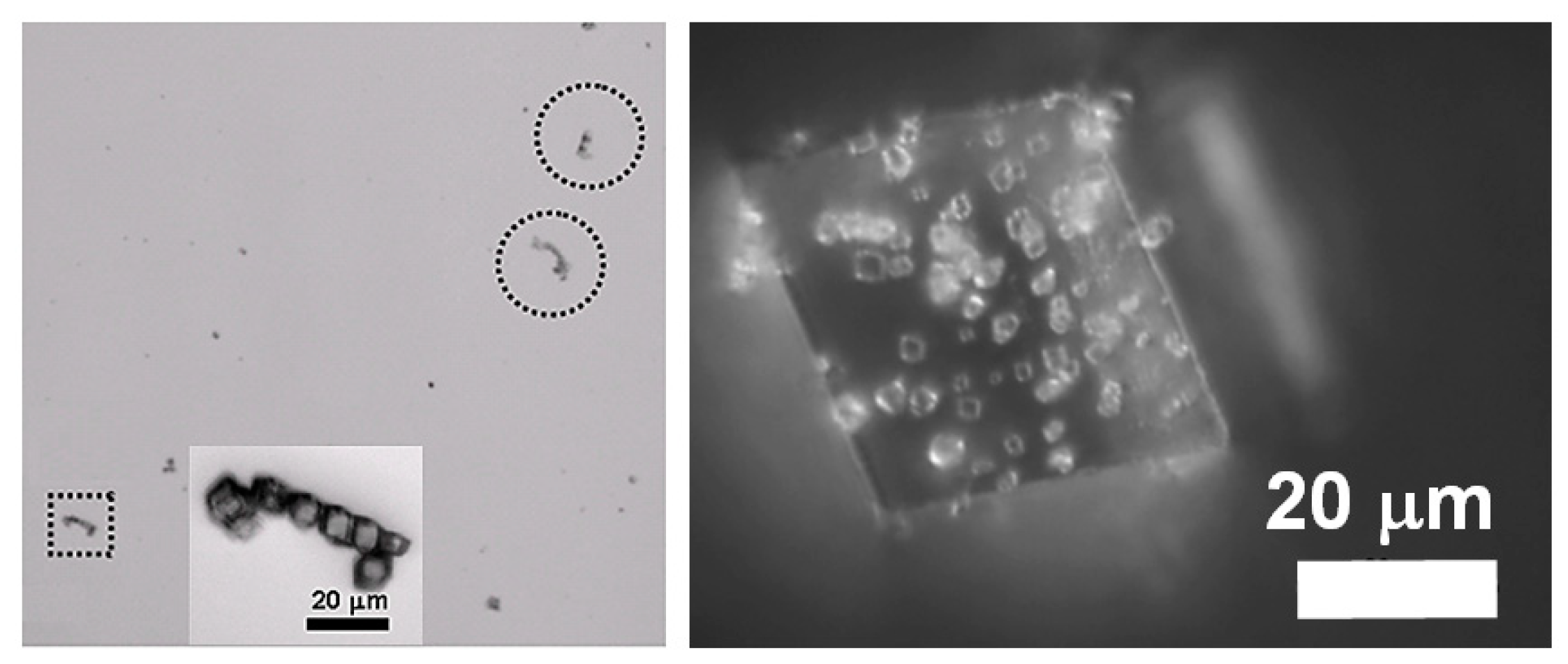
© 2020 by the authors. Licensee MDPI, Basel, Switzerland. This article is an open access article distributed under the terms and conditions of the Creative Commons Attribution (CC BY) license (http://creativecommons.org/licenses/by/4.0/).
Share and Cite
Pan, H.; Tang, R. Towards an Understanding of Crystallization by Attachment. Crystals 2020, 10, 463. https://doi.org/10.3390/cryst10060463
Pan H, Tang R. Towards an Understanding of Crystallization by Attachment. Crystals. 2020; 10(6):463. https://doi.org/10.3390/cryst10060463
Chicago/Turabian StylePan, Haihua, and Ruikang Tang. 2020. "Towards an Understanding of Crystallization by Attachment" Crystals 10, no. 6: 463. https://doi.org/10.3390/cryst10060463
APA StylePan, H., & Tang, R. (2020). Towards an Understanding of Crystallization by Attachment. Crystals, 10(6), 463. https://doi.org/10.3390/cryst10060463





